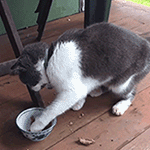Installed Ubuntu next to Windows 10 on a non-EFI system
-
Featured Topics
-
Topics
-
0
-
0
-
0
-
lavrh ·
Posted in CPUs, Motherboards, and Memory0 -
maartendc ·
Posted in CPUs, Motherboards, and Memory2 -
3
-
Fluuwu ·
Posted in Cases and Mods0 -
2
-
8
-
MZSAN ·
Posted in Home Theater Equipment0
-
-
play_circle_filled

Latest From Tech Quickie:
Ethernet Is Named After Something Really Dumb (and other tech stories)

















Create an account or sign in to comment
You need to be a member in order to leave a comment
Create an account
Sign up for a new account in our community. It's easy!
Register a new accountSign in
Already have an account? Sign in here.
Sign In Now